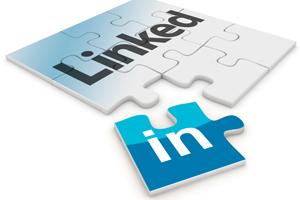 As the most popular website for business networking, LinkedIn has several possible uses for people working in the wet leisure industry. This article is aimed at getting you up and running.
As the most popular website for business networking, LinkedIn has several possible uses for people working in the wet leisure industry. This article is aimed at getting you up and running.
Let’s start at the very beginning…
Like any social network, LinkedIn has the potential to take up a lot of your time if you let it, and can damage your reputation if used badly.
It is therefore essential to take a while to understand the site and how you plan to use it to get the most benefit for your business. If you have not already read it, our guide to Social Media marketing is a good starting point.
Are you ready for your close-up?
The first and most important stage when establishing a presence on LinkedIn is to follow the instructions and set up your personal profile.
This is effectively your CV online, and can be made visible to LinkedIn users and people searching for you on Google, where it is likely to be among the top ranked results, so it pays to make a good impression.
Just like a CV, you can use your Profile to show your experience, skills and education. Later, you can even go a stage further by asking for contacts to provide independent recommendations of your work in each position.
You can add or change detail at any time using the “Edit My Profile” option, while clicking “View My Profile” will show you what someone in your LinkedIn network would see.
In good company.
If your company does not have one already, a LinkedIn Company page gives you a good opportunity to share important background information like products and services, company news and job vacancies.
Click the “Companies” tab at the top of the page, then search for your business to avoid creating a duplicate page. If there’s no page already, the “Add a Company” link in the top right hand corner will give you the opportunity to supply an email address, proving your association with the business.
LinkedIn will send you a confirmation email with instructions, enabling you to activate the page, and fill out company details such as your web address, industry and number of employees, along with a logo.
You can either allow all company employees who are on LinkedIn to change and update the page, or choose particular administrators – including yourself, obviously.
Once the page is active, go through the “edit” function, to include as much information as you like. Pay particular attention to the “description”, as this is the text users will see first when they view your company.
There are various other aspects, like job listings and company news, which you can use if it fits with your strategy.
Get yourself connected.
Now it’s time to build your network.
If you go through the “Contacts” tab at the top of the page, LinkedIn gives you various options for finding the people you know, or have worked with in the past, who are already using the site.
Alternatively, you can search for people and companies by name, using the box in the top right corner. Think as broadly as you can: not just customers, but also suppliers, partners and media contacts, among others.
Once you have some connections, you can then see their connections in turn, which can be a great way of tracking down people you’d missed. The chances are you know far more people than you think!
Don’t take my word for it…
As you know, a glowing endorsement from a satisfied customer is always more persuasive than any sales argument you can make yourself. Once you have a network of contacts, you can bring this into your LinkedIn marketing.
Using the “Recommendations” link (you’ll find it under the “Profile” tab), it only takes a minute or two to ask relevant contacts to recommend you, and your work.
This adds real value, authenticity and depth to your Profile, as it gives someone else’s viewpoint, rather than simply what you have chosen to say about yourself. If you get two or three recommendations, themes emerge, and a potential customer can quickly gain a sense of your reputation, and the kind of person you are to deal with.
Think carefully about who you ask to endorse you, though. It should be people who have had a good experience, have a good reputation themselves, and know you well enough to happily spend a few minutes composing a good recommendation. Avoid pestering people.
But don’t worry; if you’re not happy with what someone has written, you don’t have to choose to show it on your profile, or you can politely request a rewrite.
Join our club!
Finally, it’s worth exploring LinkedIn Groups as a great way to get to know like minded people in the industry, and discuss things which interest you.
We actually have a successful and active Wet Leisure group already established on the site, so if you’re new to the idea, this is a great place to start… in fact, if you have any more questions about more advanced ways to use LinkedIn, that’s probably a great place to start.
We hope that the ideas in this article are useful for you.
If you have any stories to tell or advice to give about your experiences of using LinkedIn, then please add them in the comment box below.
The concept behind WetLeisure.co is to make business growth for those working in the industry a reality and if you follow WetLeisure on Twitter, you will get notifications on these free business support articles. If you register on the site you can join the groups and forums to share and benefit from industry knowledge.
You can also find our new, B2B web shop here.
[adrotate group=”3″]
